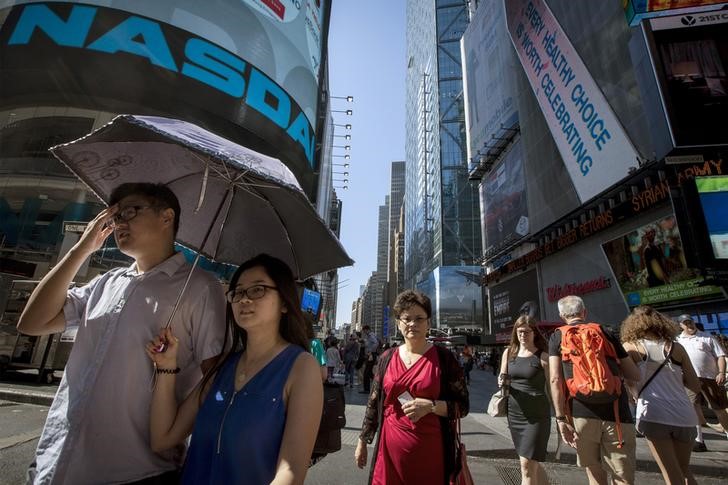By Yasin Ebrahim
Investing.com - The Nasdaq tumbled for a second-day in a row Thursday, erasing its gains for the year as U.S. rates resumed their sharp acceleration after Federal Reserve Powell offered no clues on ramping-up bond purchases and shrugged off investor fears about rising inflation.
The Nasdaq Composite fell 2.1%, the Dow Jones Industrial Average fell 1.3%, or 335 points, but had been down by more than 700 points intraday. The S&P 500 fell 1.28%.
Powell said the central bank would continue the current pace of bond buying despite the sharp jump in U.S. rates as inflation is unlikely to spiral out of control. The U.S. United States 10-Year Treasury jumped above 1.5%, while the United States 30-Year rose to a more than one-year high.
The Fed chief's reluctance to sway from the central bank's ongoing narrative that current monetary policy measures remain appropriate -- against the backdrop of investor concerns about rising inflation and a disorderly rise in rates -- exacerbated investor uncertainty. That sparked a wave of volatility, adding fuel to the tech-led sell off.
Higher-priced growth names were in the red, including Peloton Interactive (NASDAQ:PTON), DocuSign (NASDAQ:DOCU), Square (NYSE:SQ) and Tesla (NASDAQ:TSLA), which traded lower. Semiconductor stocks, already feeling the heat from the chip shortage that has forced semis to rein in production, played a role in the broader sector retreat.
Some have pointed to the Fed's expansionary policy measures and the government's issuance of debt to fund multi-trillion-dollar Covid relief programs that has flooded the market with more bonds than buyers, pushing bond prices lower and yields higher.
"What happened with rates is pretty simple: supply and demand. We've printed so much money and issued so much debt that finding buyers for that debt is more challenging perhaps than maybe people thought," Sean O'Hara, president of Pacer ETFs, said in a recent interview with Investing.com.
But a prolonged rise in rates is unlikely as the Fed will step up bond purchasing, while another round of stimulus will provide states with fresh capital that will likely find its way into the bond market.
"I think the Fed will act and, perhaps be a little more aggressive on their bond buying, O'Hara added. If the $1.9 trillion stimulus package passes, a lot of the money is "going to be transferred from the federal government to state governments, [who in turn] are likely to buy bonds," helping to stem the supply-demand imbalance.
Semiconductor stocks, which have been one the best performing sectors over the past year, were also down, led by Micron Technology (NASDAQ:MU) as the chip shortage, which has forced semis to rein in production, compounded selling the sector. Marvell (NASDAQ:MRVL) slumped 12% after its warning that the drought in chips would hamper its output this year off-setting in-line first-quarter earnings.
Beyond tech, energy bucked the trend, rising 1%, on a sharp jump in oil prices after OPEC and its allies agreed to keep production steady through April. Saudi Arabia, which was pushing against calls to increase global supply, said it would extend its one million barrels per day voluntary production cut into April to allow Russia and Kazakhstan to increase production.
The rally in oil prices has been touted as harbinger of further doom in equities amid growing inflation fears. "Further strength in crude oil prices ( > $65-66) could spark escalated de-risking in equities- against a combination of inflation fears and rising geopolitical tensions overseas," Janney Montgomery Scott said in a note.
In other news, used car retailer Vroom (NASDAQ:VRM) slumped 28% to a 52-week low after it reported a wider-than-expected Q4 loss.
